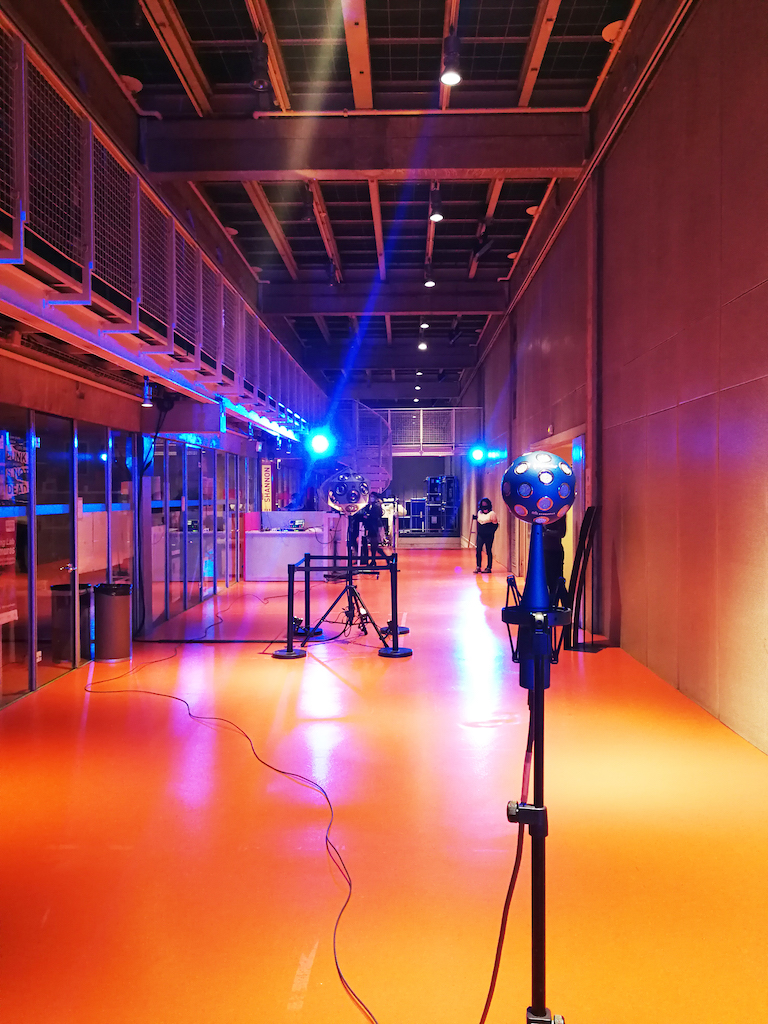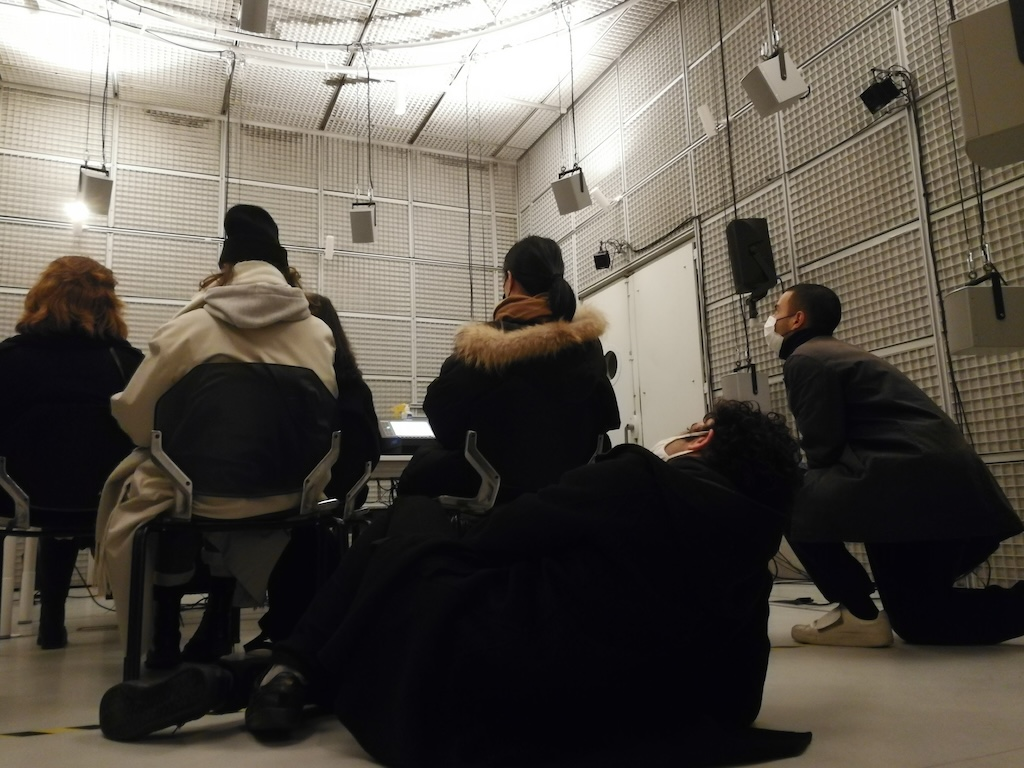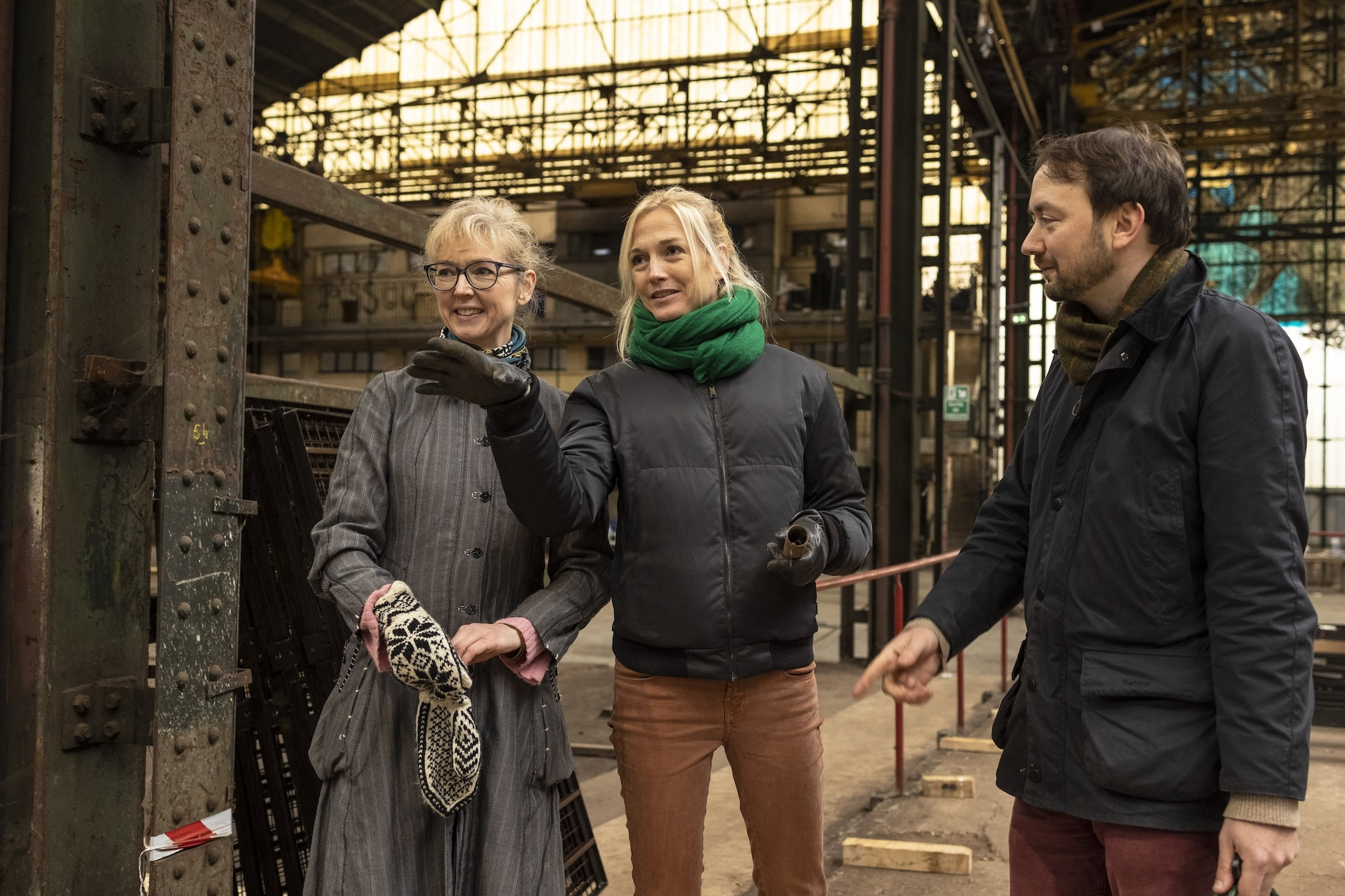Summary
We each produced one individual composition that was played to the public in studio 1, collaborated on a work played on the IKO in the main gallery and collaborated on a work played over a loudspeaker array in studio 5. In studio 1 our three pieces played continuously in rotation and the audience was invited to sit and listen. In the gallery and studio 5 the audience could freely circulate, move and explore the sound spaces as they wished. Despite there being strict COVID-19 regulations in place, this had little bearing on our public presentation, and maybe even to the contrary: by limiting the number of people in any one space at any one time meant that listeners were not disturbed by other people’s noises or by a mass of bodies occluding the sound from the speakers.
The IKO was positioned within the foyer space. As the audience entered, the first sounds they heard were moving and immersive reflections projected by the IKO towards the surfaces of the foyer, combined with moving direct sound beams. This collaborative work was developed via a ‘cadavre exquis’ approach (‘cadavre exquis’ is French for ‘exquisite corpse’; an approach similar to the parlour game ‘Consequences’) in which each composer created soundtracks consisting of only a few key elements which were then layered and collaged into the final result.
The sounds were developed with the affordances of the IKO and the foyer space in mind and then tested and adjusted onsite. For example, some material surfaces reflected certain frequencies in different ways, either emphasising movement or diffusing a sound image. For materials we needed to be careful that a beam of sound would not point directly at the head of an audience member and break the illusions that we were creating.
The acouspade was mounted on the mezzanine rail and projected a beam of directional sound off the glass roof. This mono sound track contained intermittent dry droplet sounds giving the impression that rain was falling from above, and complementing the illusion created by the IKO speaker. We expected the space to be a transitory experience and decided on a short loop of 6 minutes.
Studio-5 was a larger space in which we could set up many loudspeakers as we wished. In this space we decided to focus on features revealed to us as we listened to the synchronised and spaced double EM32 recordings. We set up two overlapping rings of 6 speakers on stands (similar to a venn diagram) and also used the six speakers that were already mounted along the walls in the ceiling. Each of the rings received a composition based on the signal from one EM32. The combined result created a new soundfield that was a combination of three different perspectives on the original site, which the listener could explore similarly to our own onsite experiences. This innovative spatial audio projection particularly enhanced the recordings of object trajectories from our performed improvisations as they moved between microphones, and from the moving sources projected over loudspeakers in Pantin. The ceiling speakers were used to create a distant soundfield and also as a transition zone between our different artistic contributions.
The materials were assembled collaboratively with each team member bringing their composed materials as original Reaper mixes without bounding down to a final master. In this way we could explore piecing together each contribution. We expected the audience to stay for longer here than in the gallery and created a loop that was 12 minutes in duration.
The installation was documented by recording with two EM32 microphones placed in different locations inside the overlapping loudspeaker circles. (The two microphone locations are visible in figure 15.) In this binaural version we have used microphone-1 from 0’00-6’23 and then crossfaded to microphone-2, emulating the change in sound-field experienced when moving to different parts of the room. Please listen on headphones at a low volume.
In Studio-1 each composer could develop their own individual work in a highly controlled listening environment. We agreed on a maximum 4-minute duration so that all three pieces could be heard in a reasonable time in the context of the two installations. Although composed independently, it is interesting to hear some similarities in the choices of materials; a feature which defines the trio as much as their variations and differences.
Each composer has written an artistic statement which along with their studio 1 compositions can be found at the following pages:





